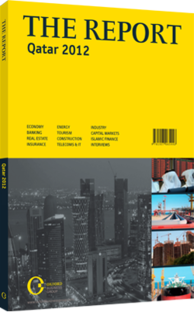Simply equine: Reaching into the past to carry on the equestrian tradition
Known for their speed, endurance and friendly demeanour, the Arabian breed of horses has been prized for centuries throughout the world. It was on the backs of these steeds that the forces of Islam spread throughout the Middle East, Europe, Asia and North Africa. In the Ottoman Empire, the role of Arabians was so important that sultans raised them in every province, so that cavalry could be gathered quickly wherever the need arose. The fame of Arabian horses was by no means confined to the Middle East, however. Many Europeans also valued this breed of horses highly. By the 17th and 18th centuries, state-supported systems in countries like France, Italy and Prussia bought and bred Arabians to supply their national armies.
In Qatar as well, these horses have played an important role in the country’s national development. Historians from the region wrote about Qatar’s role as a breeding centre as far back as the Umayyad Caliphate in the seventh and eighth centuries. Many years later, at the Battle of Al Shaqab in 1893, Ottoman forces at a small fortress were soundly defeated by Sheikh Jassim bin Mohammed Al Thani’s local force – many of whom were light cavalry mounted on Arabians.
RIDING INVESTMENTS: In recent years, Qatari leaders have been making moves to reintroduce the state’s equestrian past. Al Shaqab has served as a centre for riding, breeding and showing Arabian horses since 1992. Located just outside of Doha, the 900,000-sq-metre centre has a stable capacity of 400 horses, which it uses for its riding academy and equestrian club.
The creation of the Horse Breeding Farm Project in Zubarah focuses on keeping the Arabian bloodline strong and raising foals. Spearheaded by the Qatar Racing and Equestrian Club (QREC), the project is scheduled to begin operation in October 2014. “This [ facility] will enable horse owners who do not have such facilities to use the farm to breed and train top-class horses,” QREC’s general manager Jassim Al Boenain, told Qatari daily Gulf Times in June 2012. The QREC has existed since 1975 and is located in New Rayyan, Doha.
PARIS PARTNERSHIP: In addition to investing in facilities at home, the authorities have also been building up Qatar’s profile in racing circuits abroad. In 2008 QREC signed a five-year sponsorship agreement with horse racing governing body France-Galop. The deal allows Qatar to become directly involved with the Prix de l’Arc de Triomphe, one of the world’s most prestigious horse races. Following the agreement, the Arc doubled its prize money from €2m to €4m, making it the world’s richest race on turf.
In May 2010 QREC and France-Galop extended their partnership to 2022. Qatari leaders see the chance to associate with the race as invaluable for the country, which has been working to increase its reputation as a centre of sport. The Arc attracts a large body of spectators. Nearly 1bn people in over 30 countries watch the races from home, while 60,000 flock to Paris from overseas to watch the event live, according to estimates from the race’s organisers.
The partnership between QREC and France-Galop also helped create the Arabian World Cup, a race that takes place on Paris’s Longchamp racecourse, where the Arc is held. The Arabian World Cup, open to purebred Arabian horses at least four years old, aims to support the continuation of Arabian bloodlines by providing a race exclusively for the breed. In May 2011 a new agreement between QREC and France-Galop increased the prize money for the race to €500,000, making it the largest prize in the world for an Arabian race.
RACING IN THE STATE: As Qatar involves itself in European races, it is also increasing the usage of its own tracks. For the 2012/13 season, there are 60 race days scheduled between October 18, 2012 and May 9, 2013. Rising involvement in equestrianism offers a number of benefits to Qatar. The recent flurry of riding events not only attracts more visitors but also boosts efforts to encourage participation in sports and raise the country’s international profile. Perhaps most importantly, the increase of riding activities is a revival of a centuries-old tradition that is deep in the peninsula’s culture.
You have reached the limit of premium articles you can view for free.
Choose from the options below to purchase print or digital editions of our Reports. You can also purchase a website subscription giving you unlimited access to all of our Reports online for 12 months.
If you have already purchased this Report or have a website subscription, please login to continue.

